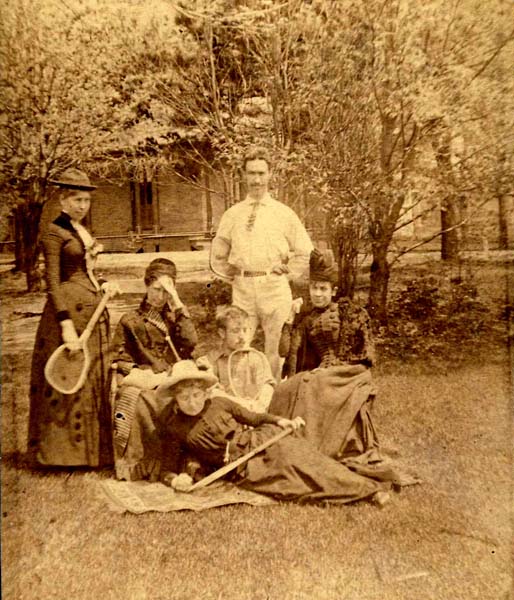Class, Gender, and the Asylum

Dressed appropriately for an afternoon social activity, Victorian men and women gather for a game of badminton on the Asylum grounds, circa 1875. It is unknown if the people pictured are patients, staff or visitors. RMHCL
1 |
2 |
3 |
4
The Victorian era was a period of great prosperity and industrial improvement, which led to the emergence of a skilled middle class. Victorian society reacted to rapid social change with strict gender and class distinctions, a heightened concern with morality, and a flurry of reform movements. Traditional gender roles and class distinctions shaped both conceptions of insanity and methods of treatment in the context of the 19th century asylum. When the London Asylum for the Insane opened in 1870, the origins of mental illness were generally understood to be a result of heredity, environment, and weak moral nature.
In Victorian society, the home and family were viewed as the source of order, stability, and morality. Urban-industrial culture meant that an increasing number of people were living outside the structure of the traditional home, which called their morality into question by accepted Victorian standards. Considering the anxieties caused by the anonymity of city life and industrial labour, single women, immigrants, and the lower classes were assumed to be the most vulnerable to mental illness. The temptations encountered in an urban setting could easily corrupt the supposedly morally weak, and lead to alcoholism, drug addiction, and promiscuity, which were common reasons for commitment to the asylum.
Insanity was classified as any behaviour that was outside of the accepted social norms of middle class society. Unconventional ideas and actions or lack of contribution and productivity were reasons to be labeled mentally ill. The asylum served an important social function, because a diagnosis of mental illness provided patients and their families with an excuse for disrespectable behaviour. It was also a way to control and remove socially undesirable citizens from the public sphere.
Despite the thrust of social changes, family and gender roles remained grounded in Victorian tradition, and influenced the development of treatments for mental illness. In the 19th century, moral therapy placed men and women in traditional gender roles, intended both to cure and prepare patients for a transition back into society. Moral therapy was not limited to patients who could be cured. While mental illness separated them from regular society, the experience of patients diagnosed as incurable was shaped by Victorian culture, and the same conceptions of gender and class. Physicians at the London Asylum hoped that encouraging incurable patients to continue functioning in their expected social roles would bring a sense of purpose and normalcy to their existence, and improve their quality of life.
At the London Asylum during the 19th century, male patients were engaged in work suited to their social responsibility as breadwinner, primarily in farm labour or working in the factory-like settings of the slaughterhouse and cannery. Similarly, female patients performed gender-appropriate duties such as cooking, cleaning, and sewing. As society evolved towards modern ideas of equality, male and female patients came to work in all areas of the Asylum.